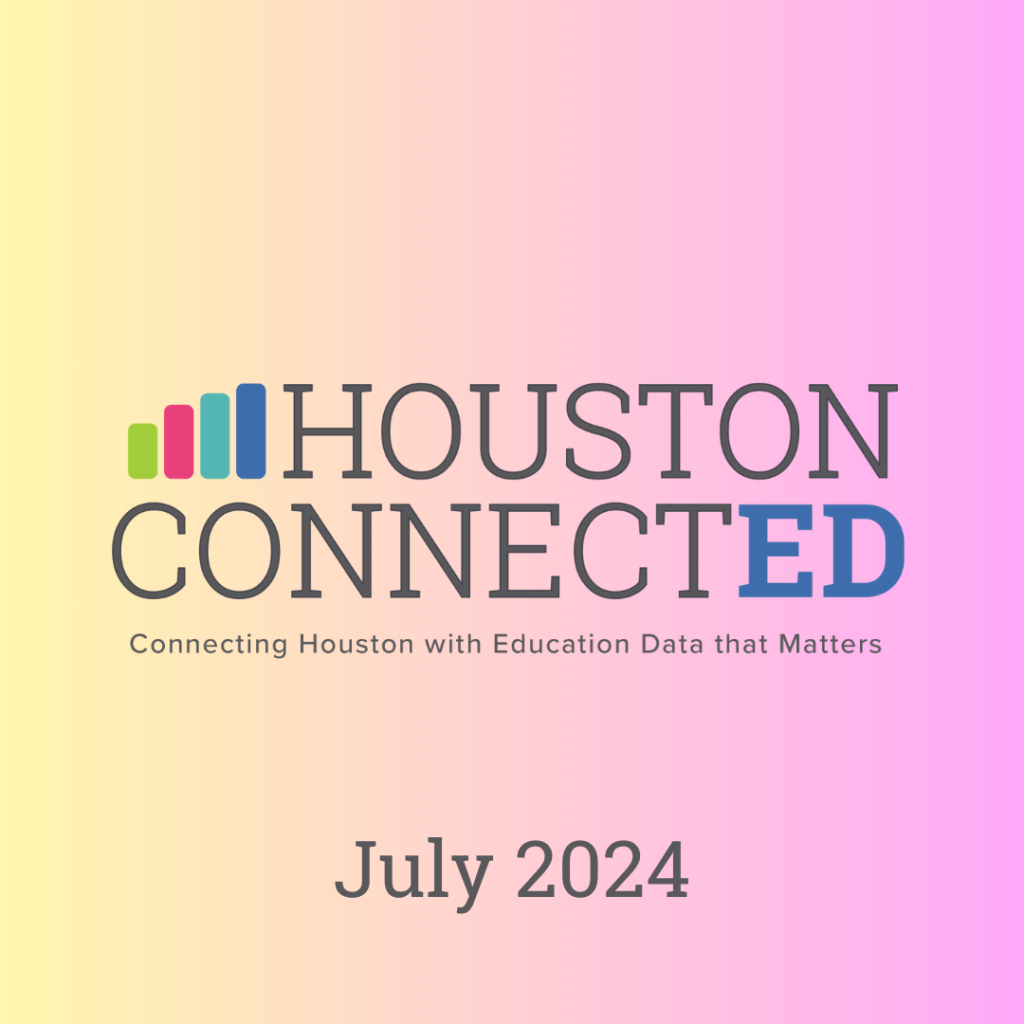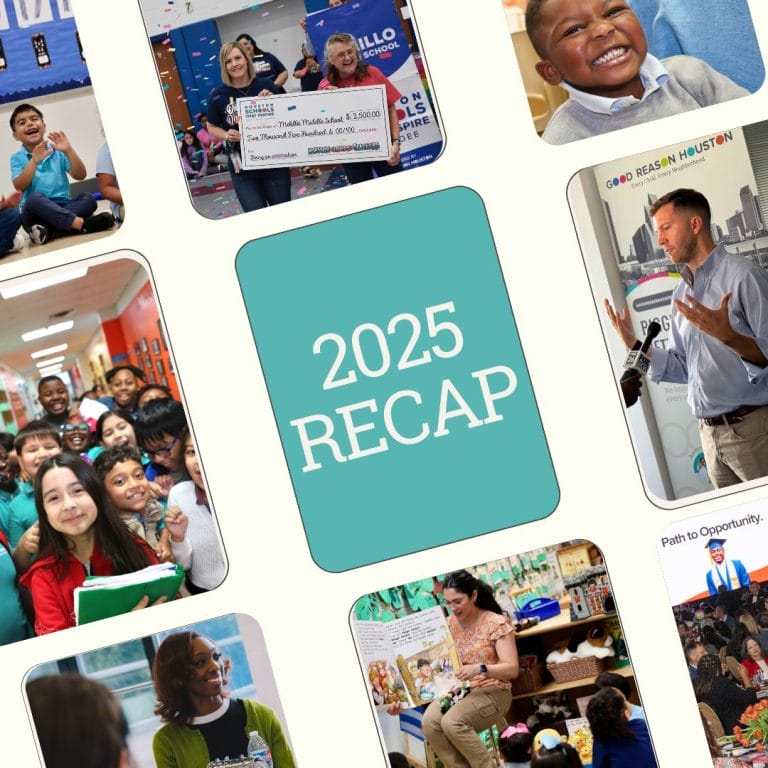Dear Partner,
Last month, the Texas Education Agency (TEA) released results for the 2024 State of Texas Assessment of Academic Readiness (STAAR) exam. Each spring, 3rd through 12th graders across Texas take the STAAR exam in subjects like reading, math, science, and social studies. The STAAR exam represents one of our most critical opportunities to gauge how students are doing academically, and is a key component of the state’s school accountability rating system. Because STAAR has been Texas’s primary state assessment tool for over a decade, it also offers important insights into how student achievement has changed (or not) over time, particularly for students from historically marginalized backgrounds.
Good Reason Houston shared a brief overview of STAAR results from the Houston region to provide a snapshot of student performance. This month’s issue of Houston ConnectEd looks at how Houston-region students from different backgrounds performed on their STAAR exams, and looks back several years to see if historical differences in performance are closing. Although most student groups made modest gains in math and reading proficiency from 2023 to 2024, persistent equity gaps demonstrate the urgent work ahead for Houston to provide opportunity for all students, particularly those from historically marginalized backgrounds. Only by addressing these challenges through long-term, meaningful collaboration between stakeholders in education and beyond can we establish Houston as the nation’s leading education city.
As you have questions or thoughts on the work highlighted here, please reach out to us at info@goodreasonhouston.org, or join us on social media using #HTXConnectEd.
Sincerely,

In this newsletter, we’ll provide you with:
STAAR Results by Student Group I STAAR Results Over Time I Data in the News
The Gist:
The Gist provides key takeaways from this month’s Houston ConnectEd. Read on for more detail on what the data is telling us about the state of public education.
- Significant equity gaps between students from different backgrounds remained in both math and reading in 2024.
- Fewer than 1-in-5 special education students met grade level standards in either math or reading, highlighting this student group’s critical need for additional focus and support.
- Across the region, there has been slow progress in narrowing the achievement gaps between student groups: the proficiency gap between the groups with the lowest and highest scores remaining unchanged at 43 points in both 2018 and 2024.
STAAR Results by Student Group,2024
Overall, half of Houston-region students met grade level standards on STAAR reading and 39% met grade level standards on STAAR math in 2024. These top-line numbers mask significant variation depending on students’ backgrounds, however. As seen below, while nearly three-quarters of white or Asian students met grade level standards in reading, only 42% of Black students and 45% of Hispanic students did so. These equity gaps grow even larger when looking at students receiving specialized services from our public education system, such as those receiving emergent bilingual or special education supports.
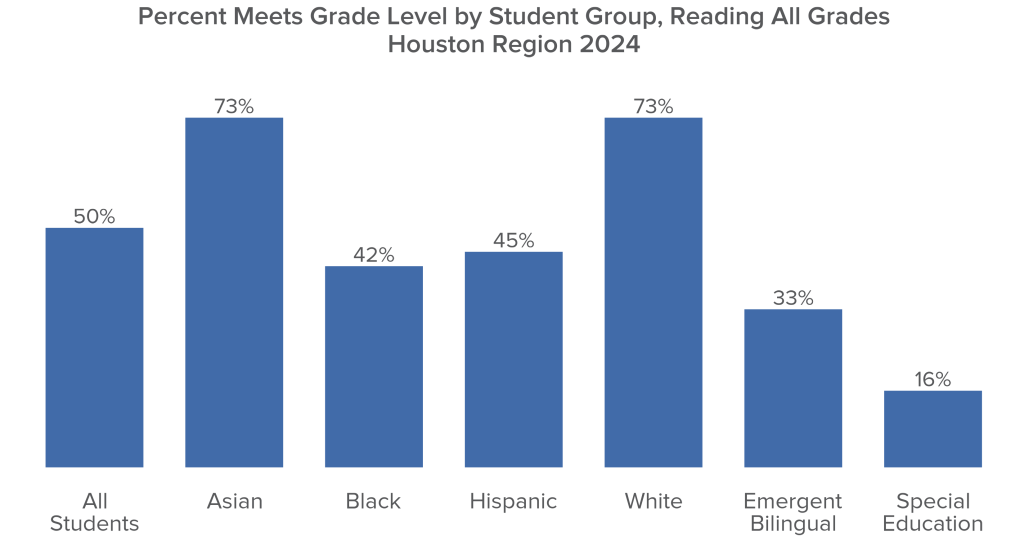
Even starker equity gaps were evident in math results in 2024, with Black and Hispanic students across the Houston region being only about half as likely to meet grade level standards as their white or Asian peers.
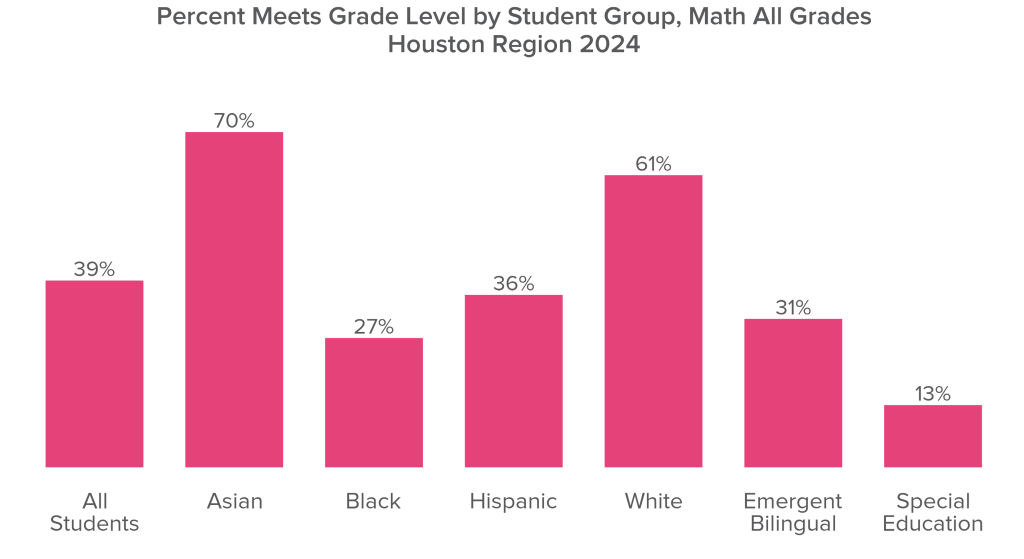
A significant majority of students in the Houston region are Black or Hispanic, so these persistent equity gaps represent both a serious problem and an important opportunity. They demonstrate that, despite decades of attention starting with No Child Left Behind in the early 2000s, a core problem facing our schools continues to be that we have not yet cracked the code to how to best serve students from historically marginalized backgrounds. Our students receiving special education services in particular are indeed being left behind.
At the same time, these stark differences also show us the scale of the opportunity before us. An innovative, long-term commitment to improving outcomes for the students historically most underserved by the public education system can be the boost our region needs to become an example for the rest of the nation.
STAAR Results Over Time, 2018 to 2024
While overall equity gaps in the Houston region remain alarmingly large, they did close slightly for STAAR reading in 2024 relative to prior years. Houston region students overall saw about a 3-point gain in the percentage of students meeting grade level standards in 2024 compared to 2023, with the largest gains happening among student groups such as Black and emergent bilingual students.
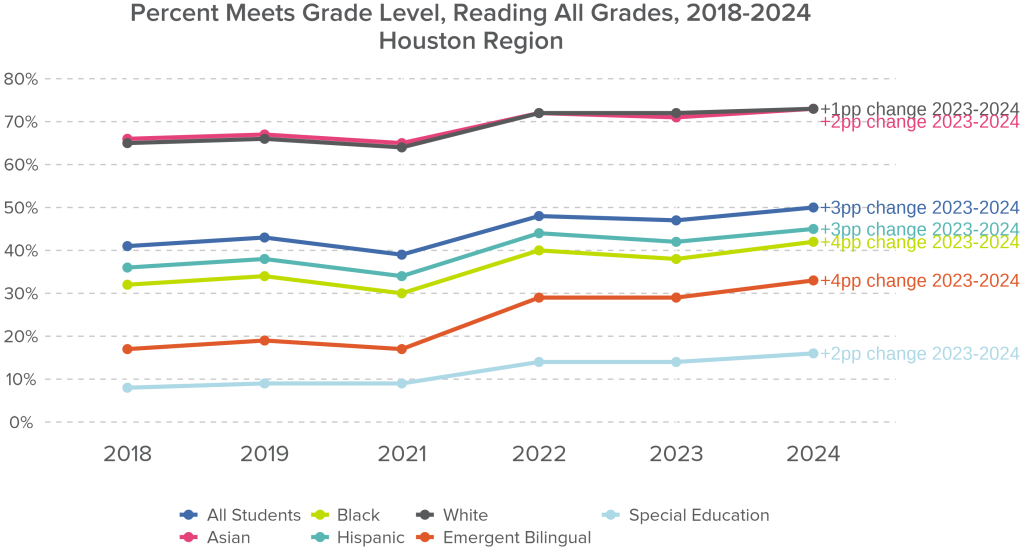
While white and Asian students saw 1- and 2-point increases in reading proficiency, respectively, Black and emergent bilingual students both improved by 4 points. Hispanic students’ gains mirrored those of the region overall at 3 points. So, while equity gaps remain far too significant, we did see some progress toward closing those gaps in reading this year.
Unfortunately, STAAR math results tell a different story. Houston-region students overall only saw a 1-point gain in the proportion of students meeting grade level standards in math, and those results were mirrored across most student groups. Across student groups and grade levels, math achievement in the Houston region remains far below pre-pandemic levels seen in 2018 and 2019.
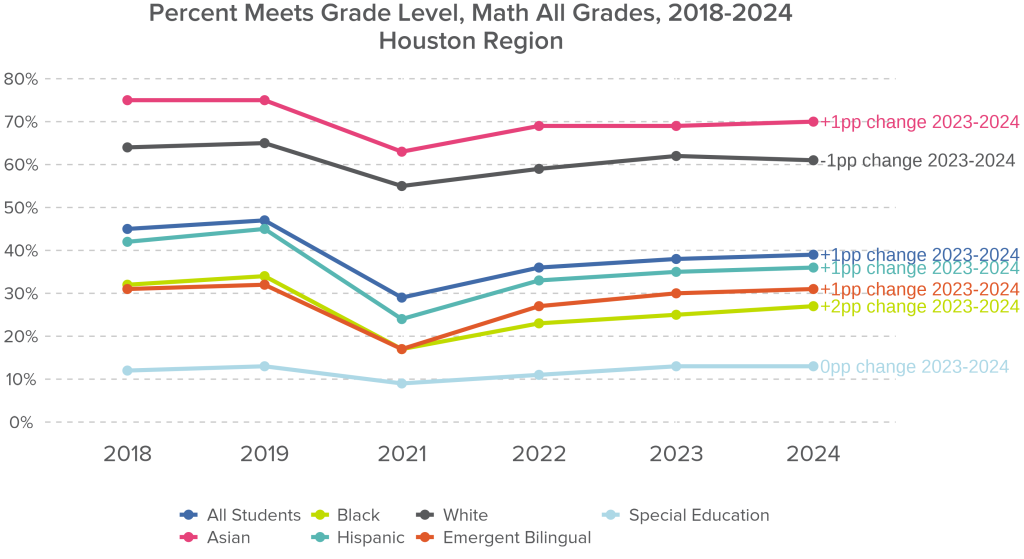
On the whole, while Houston students made progress in reading and minor progress in math from 2023 to 2024, we hope to see significantly larger gains among our most underserved student populations in years to come. Equity gaps in student achievement across the Houston region have persisted for far too long. The gap between the highest and lowest performing race/ethnic groups in math in 2018 was 43 percentage points, and in 2024 it remained exactly the same. By focusing on providing the hundreds of thousands of students here in our backyard who most need our support with the attention and care they deserve, we can ensure the vitality and resilience of our region for decades to come.
Data in the News
Here are some of the education-data news items we’ve been keeping our eye on over the past few weeks.
- Texas students’ STAAR scores decline in math and science: STAAR results reveal that Texas students are still struggling to recover from COVID-19-related declines, especially in math and science, with scores dropping statewide from 2023 to 2024. This highlights the challenges ahead for educators and policymakers in helping students exceed pre-2020 performance levels.
- Texas districts still struggling to improve math, reading scores; Houston ISD bucks trend: Many of Houston’s largest school districts saw declines in STAAR math performance and modest reading gains for 3rd to 8th graders from 2023 to 2024. However, Houston ISD, under TEA intervention, showed the region’s largest gains in both subjects.
